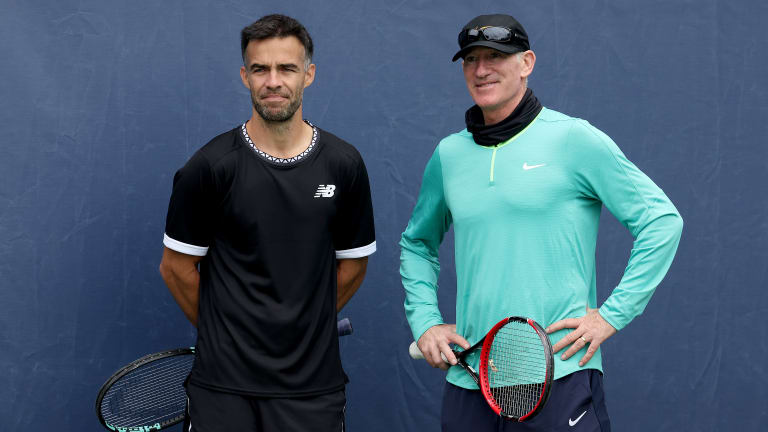US Open
Has tennis figured out its on-court coaching problem, or shown that it'll never be solved?
By Sep 05, 2023US Open
Eric Butorac will replace Stacey Allaster as US Open tournament director
By Nov 17, 2025US Open
Beyond The Champions: 2025 US Open Winners and Losers
By Sep 10, 2025US Open
In US Open defeat, Jannik Sinner faces his shortcomings
By Sep 09, 2025US Open
Amanda Anisimova's US Open fortnight wasn't just "incredible"—it was redemptive
By Sep 09, 2025US Open
Overcoming Doubt, Finding Deliverance: Six WTA takeaways from the 2025 US Open
By Sep 08, 2025US Open
Service and a smile: How Carlos Alcaraz conquered Jannik Sinner at the 2025 US Open
By Sep 08, 2025US Open
Carlos Alcaraz captures sixth Slam and second US Open title, dethrones No. 1 Jannik Sinner
By Sep 07, 2025US Open
Alcaraz vs. Sinner US Open final start delayed by 30 minutes
By Sep 07, 2025US Open
Blinding Lights: Amanda Anisimova rues missed opportunities, serve woes after US Open final
By Sep 07, 2025Has tennis figured out its on-court coaching problem, or shown that it'll never be solved?
In reality, there isn’t a lot of time for complex instructions in the 25 seconds between points.
Published Sep 05, 2023
Advertising

Since her Wimbledon first-round loss, Coco Gauff has won 15 of 16 matches.
© Sipa USA
Advertising

Goran Ivanisevic has worked with Novak Djokovic since June 2019.
© Getty Images
Advertising

Gauff has two coaches in her box: Pere Riba, who emphasizes details and decision-making, and Gilbert, whose consultancy is heavily focused on "incredible" scouting.
© Getty Images